4.7. Awnings, Blinds And Canopies
- North facing elevations do not normally require blinds.
- For elevations that require shading, the blind box design should be incorporated into the cornice if located above the fascia. . If the blind is to be located below the fascia, then the fascia should be of a design that incorporates the blind box. This is to avoid the blind box sitting proud of the fascia for the sake of a neat design. If the blind cannot be incorporated into the fascia, then provision should be made for adequate flashing to avoid water pooling as well as drip detailing to avoid rainwater streaking on the shopfront. The box design should also prevent pigeon roosting and nesting without the need for unsightly bird spikes.
- If a protruding blind box is unavoidable (for example if retrofitting an existing shopfront and the addition is justifiable) then the box design should incorporate features to mitigate rainwater ingress such as sufficient overhang of the capping, lead flashing and a drip recess in the capping of the boxing.
- Fixed, Dutch canopies must not be used as they are not retractable. Awnings should be retractable. The exception to this is the folding Victorian Dutch blinds characterised by timber side brackets.
- Where replacement blinds are needed on Georgian or Victorian shopfronts, traditional blinds should be reinstated. If non-traditional, mechanical blinds are unavoidable, then these should be housed within traditional wooden boxing and not modern, metal frames.
- Awnings should be made of traditional fabric such as canvas. Plastics and other shiny fabrics should not be used as they create undesirable reflection. Plastics are more difficult to repair and therefore less sustainable
- Canopy colours should complement the overall colour palette of the shopfront and surrounding context. Alternatively, the colours could reflect the traditional colours used by specific trades (for example, blue and white for butchers, green and white for grocers, red and white for barbers).
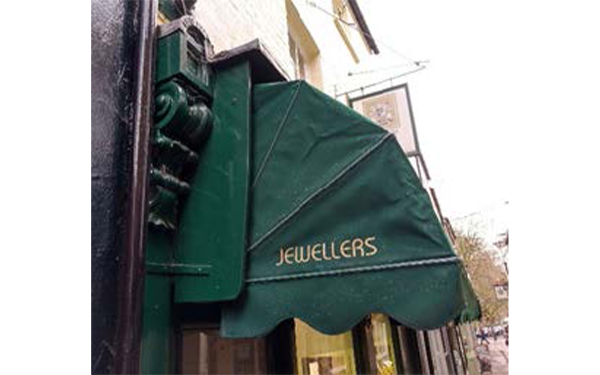 Folding Dutch Blind, London
Folding Dutch Blind, London
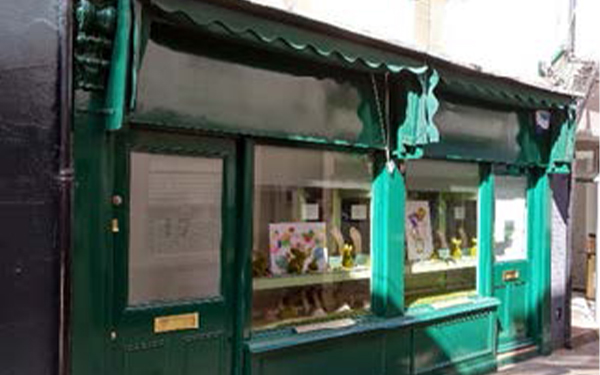 Folding Dutch Blind, London
Folding Dutch Blind, London
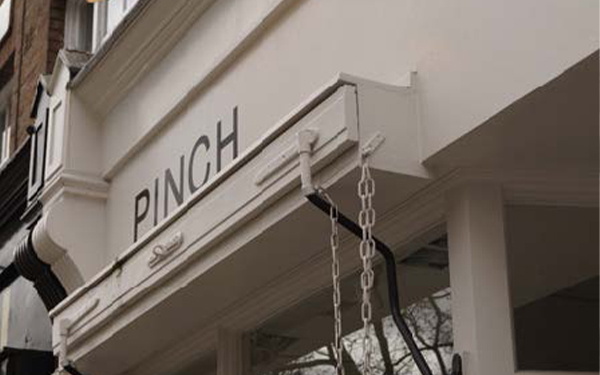 A good example of a blind that is not integrated into shopfront, London
A good example of a blind that is not integrated into shopfront, London
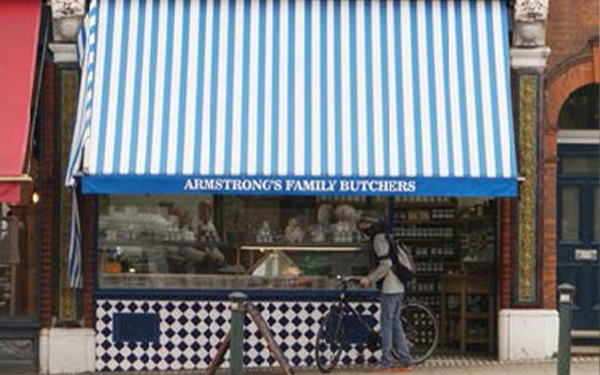 An example of complementary colours on a shop blind. London. The valance at the bottom of the awning adds an additional fascia to the shopfront.
An example of complementary colours on a shop blind. London. The valance at the bottom of the awning adds an additional fascia to the shopfront.
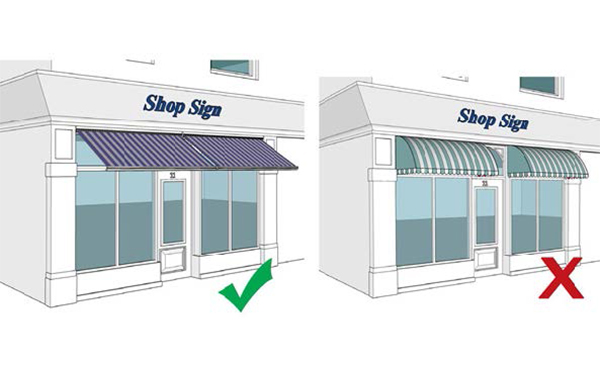 Canopies, rather than Dutch blinds, are preferred. Non-retractable Dutch blinds should not be used
Canopies, rather than Dutch blinds, are preferred. Non-retractable Dutch blinds should not be used
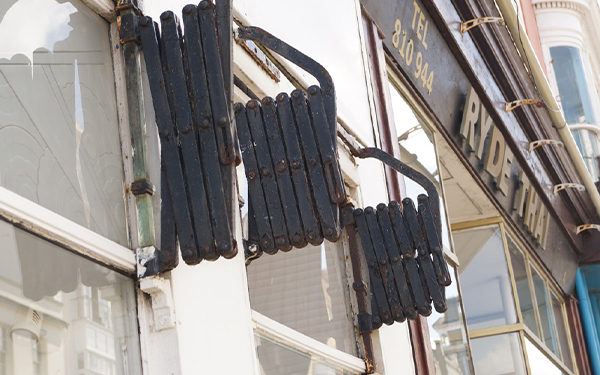 Historical precedents of canopies in Ryde
Historical precedents of canopies in Ryde
 Historical precedents of canopies in Ryde
Historical precedents of canopies in Ryde





